Last Updated on June 12, 2024 by
Pangot, Bhimtal and Sattal Birding is one of the best places to visit in Nainital. Read all about the bounty of birds found here.
Having only been to the Arid region and caught a glimpse of wetland birds, I was really looking forward to sighting some mountain species. So I planned a trip to Uttarakhand, to enjoy the hills, nature, and wildlife. Our Kumaon trip was divided into 2 parts: Birding in Sattal followed by a visit to Jim Corbett National Park.
Kumaon being so rich in biodiversity is home to not only birds and animals but honeybees also thrive in this area. We saw huge trees with honeycombs and locals selling honey on the roadside. Read about the Beekeepers in Kumaon.
Our drive from Nainital towards Pangot and Sattal, made us cross mixed forests dominated by oak, pine, and rhododendrons. The entire landscape is characterized by dense vegetation with numerous perennial creeks and streams that crisscross the area. No wonder it has been home to birds for over many years. I always vote for Vacation in Indian Jungles for this very reason!
Sattal is an ideal place for birds that migrate from Corbett upward to beat the heat in the summer and downward to avoid the cold weather in the Himalayas. The Rhododendrons make up for an amazing view and an ideal nest for the birds. Read about Rhododendron Blossoms on Triund Trek.
Table of Contents
Sattal Birding: Why is the Kumaon region so rich in bird biodiversity?
Natural riverine areas mark ecotonal habitats harbouring a characteristically diverse faunal assemblage, especially for birds that use these habitats as pathways, crucial for their movement. Kumaon, nestled in the shadow of the Nanda Devi Range of the Himalayas, is a bounty of nature and an abode to many species of birds.
Kumaon is a large area and while it is possible to sight birds around the forests and valleys, the towns of Pangot, Kilbury, and Sattal have developed themselves into focus areas concentrating on birdwatching. There are many lodges with wildlife guides that can help plan a birdwatching trip. Also check Bird-watching in Shitlakhet, Almora, another district in Kumaon popular for birding.
How to Reach Sattal from Nainital
By Road
The Pangot Bird sanctuary is located at a distance of 13km from Nainital city and can be reached by self-driving or by hiring a taxi cab. The Sanctuary is located at a distance of 355 km from Delhi and 365 km from Agra. Local cabs from Nainital are available for Rs 2,000-3000 per day.
By Train
Kathgodam Railway station is the nearest railway station which is about 20 km from the Pangot and Kilbury Sanctuary. It is possible to hire a taxi leading to the sanctuary.
By Flight
Pantnagar Airport is the nearest airport which is around 95 km from the Pangot and Kilbury Bird Sanctuary. It is possible to hire a taxi leading to the sanctuary which will take around 2 to 3 hours to reach.
Where to Stay in Sattal / Pangot / Kilsbury
Jungle Lore Birding Lodge is the first birding lodge in India. It has four cottages with rooms built like British bungalows and is located on a hillside overlooking the vast open forest.
Pinewood Cottage is 15km from Nainital and offers facilities like bird watching, trekking, rock climbing, rafting, and night safari
Kilbury Forest Rest House, built by the British, is equipped with all modern amenities. The walk from Pangot to Kilbury Forest Rest House is very popular as it traverses through thick oak, pine, bamboo, cedar, and rhododendron forests
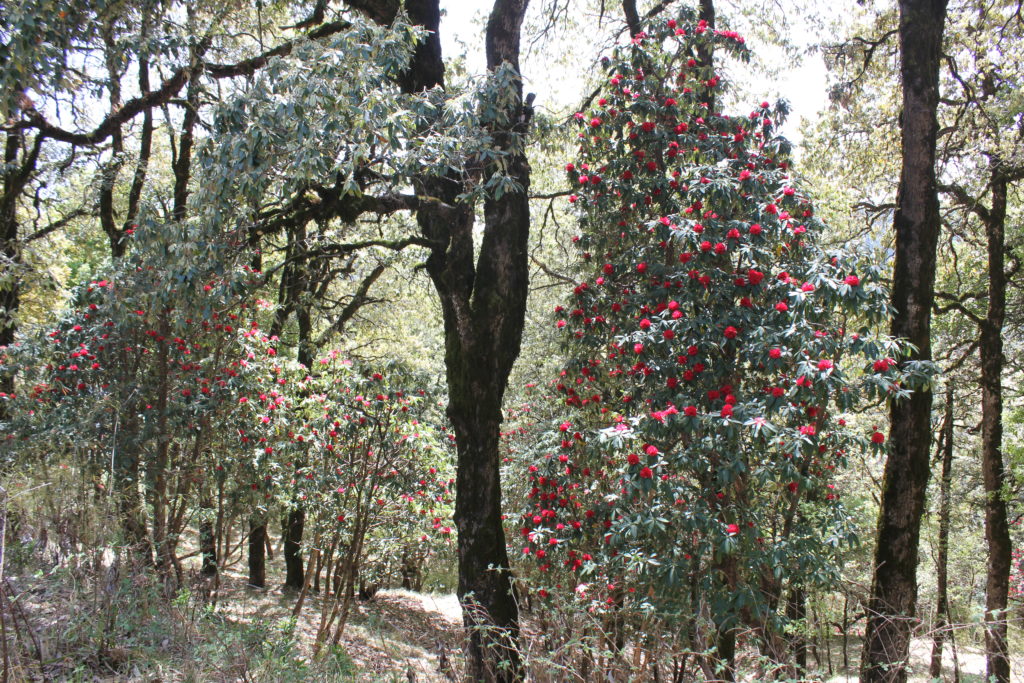
Nainital to Sattal Drive
About 13 km away from the Nainital city is the Pangot village located at a height of 6,510 ft above sea level. Pangot village is a famous tourist destination as it houses over 580 documented species of birds. While birdwatching in Pangot is a big attraction, the oak forests and the blooming rhododendron trees make the landscape even more stunning.
Sattal Birding
We were woken up by the songs of a variety of birds that we had not heard before. Excited, we mounted the lens on the camera and rushed towards the backyard of the property. What we saw and captured in our camera for the next 2 hours was a celebration of winged creatures. I hope you enjoy this photo journal of Pangot, Bhimtal and Sattal Birding.
Verditer Flycatcher
While birding in Pangot, one is bound to come across the Verditer Flycatcher that is abundantly found here. It was one of the first birds we spotted while we were on our way to Pangot from Nainital. They were omnipresent in the area.
The flycatcher felt at home with our presence and happily posed for us.

Blue whistling thrush
A blue whistling thrush played hide and seek outside our accommodation whistling to glory while the morning sun shone bright and glistened on his blue feathers. He slowly glided into the nearby shrubs, probably because he did not like the shutter sound of my camera.
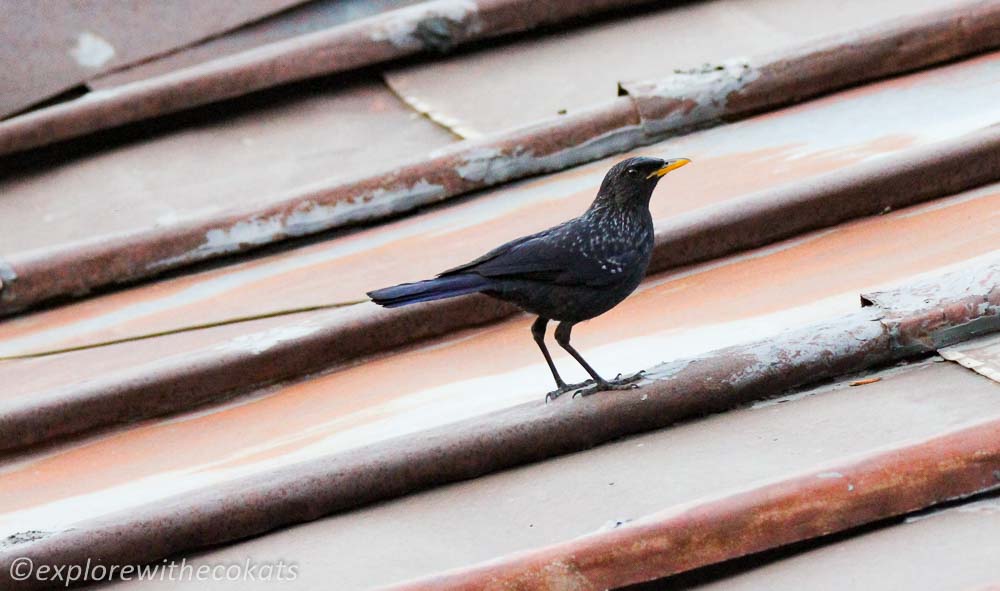
Kalij Pheasant
A discussion about our interest in birdwatching with the hotel owner leads him to inform us that he has been observing Pheasants on his property. He was quick to ask the bell boy if he spotted any previous evening. We were hoping to capture him in our cameras.
While walking towards the backyard, we saw a black silhouette crossing the parapet between 2 properties. It only took us seconds to identify it but the red-eyed bird known as Kalij Pheasant had crossed the boundary wall to another side. But we still managed to photograph him!

Blue Winged Siva
Soon enough a pair of Blue Winged Siva descended on the marble bath of the property where we were staying. Their playfulness was so oblivious to our presence and they enjoyed their romantic bath together which lasted for a short time.
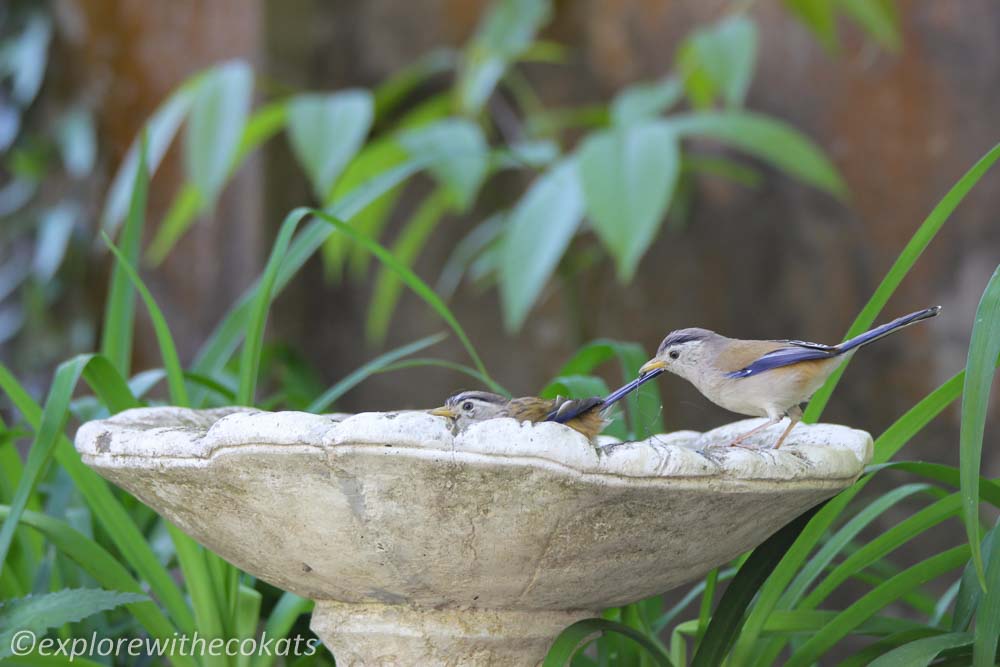
Black Chinned Babbler
Two spectacled biscuit-coloured birds now touched down on the water bath. They were playful but not comfortable sharing the bath with the Indian Black lored tit. The male made sure they did not want the Black Lored Tit there and shooed him away to have a private bath with the lady.

Black Headed Jay
A small movement in nearby bushes made us strain our eyes and neck to see who was hiding behind the branches. A blue mirage is all that we saw. Noiseless we stood there for the shy blue bird to come out. At some time there were not one but three black-headed jay on the tree. There seemed to be 2 males and 1 female as the males were doing a display pattern to woo the lady.
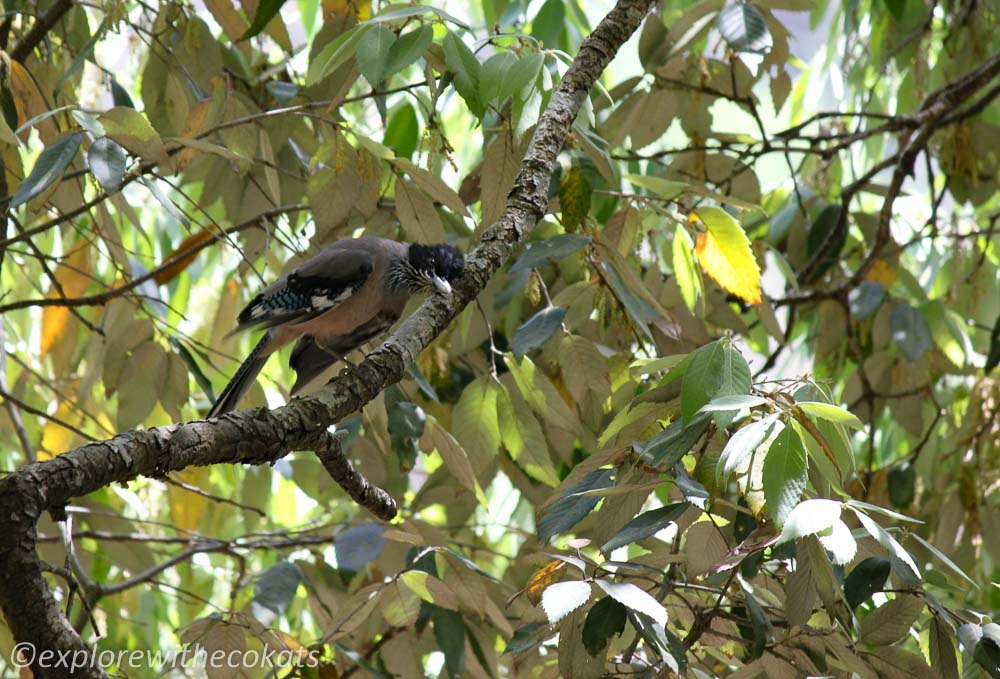
Rufous Sibia
There was a flutter in between the bright red rhododendrons. A rust-coloured bird flew by. On landing a couple of branches away on an old oak tree, it posed for us. The slender buffy-rufous coloured bird called Rufous Sibia, grew comfortable and flew to the parapet near the road and even posed for us.
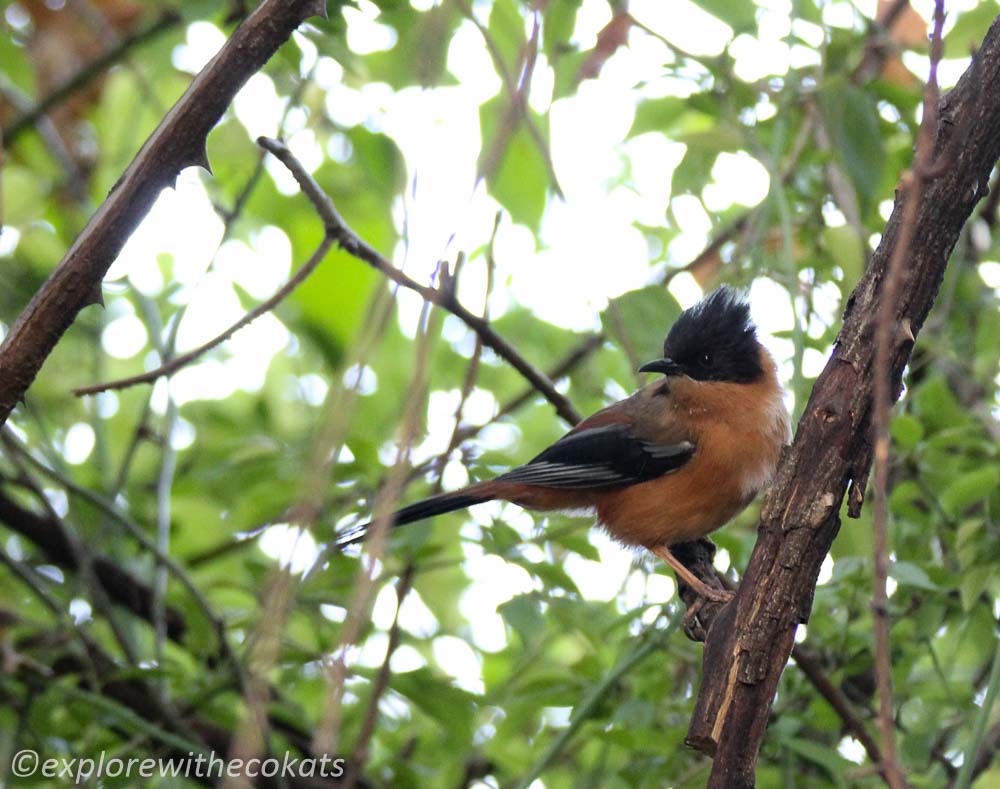
Grey-winged Blackbird
Our car crossed a black bird sitting on the road who seemed to be scavenging. We halted and walked back to the spot to find him still doing the same. On closer look, we saw that he was actually clearing the fallen leaves and making the area clean. Probably a fan of Swachh Bharat Abhiyan! We saw the female counterpart doing the same a couple of meters above the cliff. We have no idea why they were doing what they were doing.

Since we did not want to stay in Pangot, we never really researched for a day guide who could show us the birds around. We just walked through the valleys of forests and stopped if we heard a bird call or flutter of wings or just about any movement in the trees.
However, a couple of hours spent here were nothing less than a turbo charge for us which left us wanting more and planning a dedicated trip to Pangot and Sattal with a guide.
Sustainable tips for Birding in Sattal
- Wear camouflage colours that will easily blend with the surrounding – green and brown shades work best around the trees.
- Do not make noises when you spot a bird, it may get distracted and fly.
- Do not wear perfumes or body spray when you go birdwatching.
- Try to avoid bird call apps to attract birds or make them look your way for a good photo. It is just unethical.
- Do not dispose of wet waste or plastic in the jungle valleys.
Read About more Bird-watching destinations:
Read More Uttarakhand Posts
- Things to do in Rishikesh
- Gucchu Pani
- Is Dehradun worth a stopover?
- Places to visit in Nainital
- Chopta Chandrashila trek
Disclaimer: This post contains affiliate links. It means it adds no extra cost to you if you book through the link but I get a referral bonus which helps me earn a little to keep this website up and running.
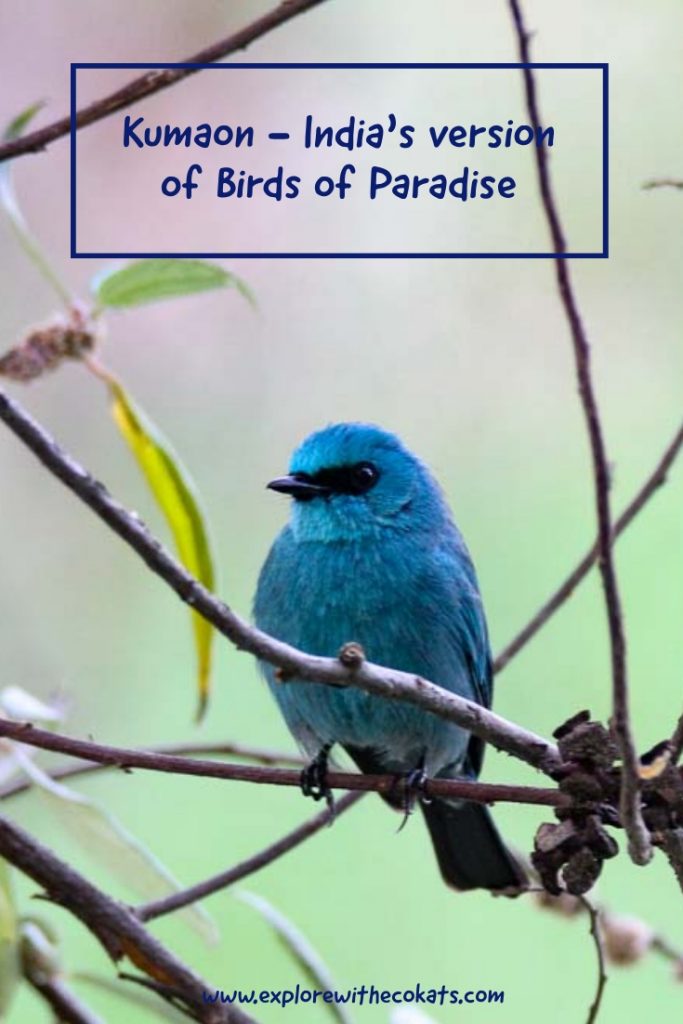
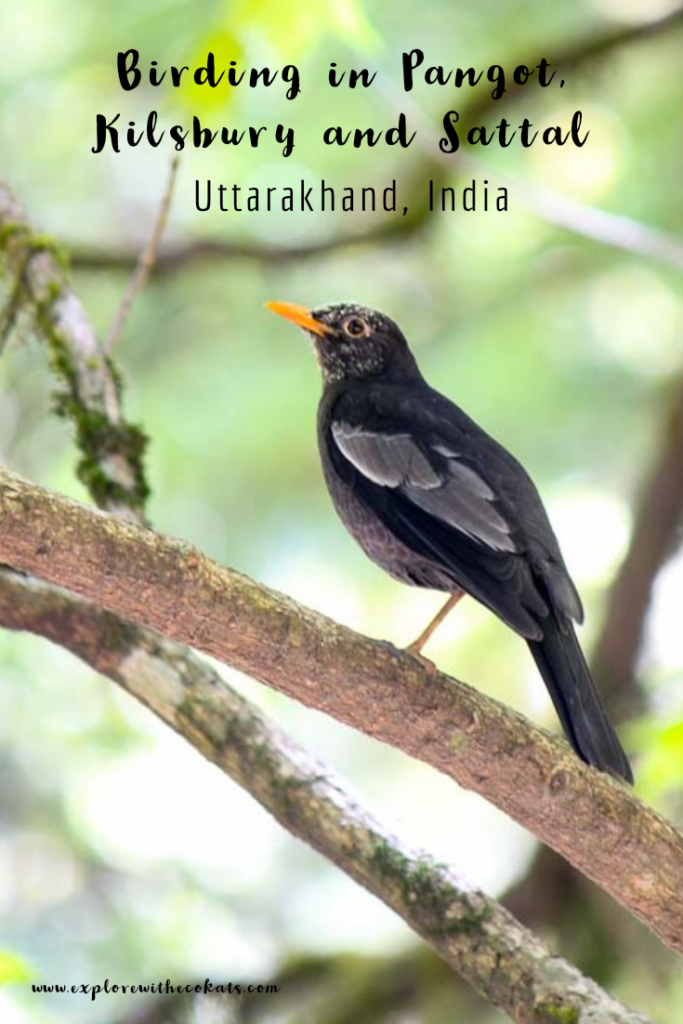

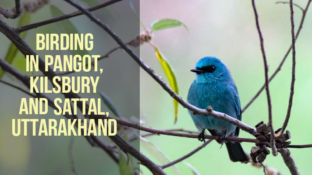
21 comments
Nice article
Woow this post and those cuye birds gave me goosebumos while reading the post.kumaon region is bird watchers paradise and glad you enjoyed your trip so much.loved reading the post.all your captures are lovely.
Thank you Mayuri 🙂 I am glad you enjoyed the post!
These are beautiful birds. It’s places like this that we love to visit, so definitely adding it to our list for India.
beautiful.. I was waiting for this post as you mentioned in IG! Loved each click. I think I spotted a few lookalikes down south but colors change. And them birds are a bit healthier, guess thats is there to fight the cold.
Thank you so much Madhurima. Our hearts were so full seeing this nature’s bounty in Uttarakhand and we can’t wait to go back (as usual) 😉
These birds are so pretty! And they look like they have a ton of personality! My favourite places for bird watching are Australia and Sri Lanka.
I did not Australia had that many options to see birds. Sri Lanka is ofcourse an haven!
Wow, you must have had such patience to get so many great pictures of different birds here. And the blue one at the top is so cute and fluffy. I always forget that India has such beautiful nature – I’m so focused on the busy cities.
Birdwatching is like meditation to me and the excitement to spot a bird and identify it is an amazing package in itself.
I would love to do something like this, so different from the typical visit XYZ sites & attractions and eat here. This is a beautiful ode to these fluttering creatures and their peaceful habitat. Thanks so much for sharing, and for reminding us all to enjoy the finer things in life.
It brings joy to see such small and colourful living creatures living their lives, so oblivious to other things. It is therapeutic.
Wow, what great animal pictures. Because of their fast movements and their height, I always find birds very difficult to take pictures of. My favorite picture is clearly the blue bird!
Such an amazing blog and its filled with such beauty. Appreciate your passion and work
How beautiful! As I was reading, a blackbird was singing to me from the tree outside, reminding me of the similarities between your beautifully observed birds, and ours here in the UK. The colours in your pics are singing out as beautifully as I imagine the birds sing. And that blue – stunning! I once manage to catch a quick glimpse of a turquoise kingfisher and I can still remember the brightness and brilliance of his feathers. Here our pheasants are lovely but fond of roads, and we have to be really careful on the local lanes so we can avoid them on the corners.
Kumaon is such a lovely and pristine region of Uttarakhand where nature unleashes its magic. The exotic birds of Kumaon are another magical aspect of the beautiful region. You have captured some spectacular shots of the birds. Also, like the fact that you have been following ethical birding practices.
Wow.. those are some beautiful pictures. I totally agree with your tip on wearing camouflage colours so as to easily blend with the surrounding. It works really well. This is such a great way of enjoying nature and getting some really amazing bird pictures while at it. Thanks for sharing.
Kumaon in India looks really a bird’s paradise. The blue colored Verditer Flycatcher looks very photogenic. Drive towards Pangot looks wonderful with all those forest types of trees.
You got some lovely photos of the birds – I always find them so difficult to photograph! This is something that I’d love to do – I can just imagine how peaceful it must be there.
I”m becoming obsessed with birds lately so I loved your story and photos. 🙂 Just saw a pheasant in the wild for my first time on a trip to Kansas, but he wasn’t as pretty as yours. 😉
beautiful post and photos